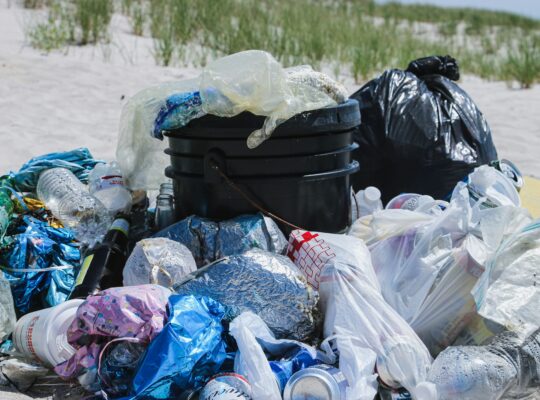Why Growing Forests Is Awesome
Guest Post by: Job van Hooijdonk, co-founder of Regreener
In 2016, a record of 29.7 million hectares of forest disappeared. That’s2 90,000 square kilometres. Over 50% of the world’s forests have been cut down in the last 100 years. A lot of deforestation took place in third-world countries.
Globally, one-fifth of the Earth’s land area (more than 2 billion hectares) are degraded, an area nearly the size of India and the Russian Federation combined. Land degradation is undermining the well-being of some 3.2 billion people, driving species to extinction and intensifying climate change. Can we fix this? Of course, we can (you’re visiting Happy Eco News after all!). I believe it can be done by planting many trees if we do this correctly.
Is planting trees as good for the Earth as everyone says? Let’s be clear: I don’t believe we will save our planet by just planting trees. Of course, a major turnaround (in both thinking and doing) is needed to save our planet. We need to reduce emissions and maybe even adjust a lot of the systems that are currently in place. However, I believe that growing forests (if it’s done right) will play a very important role in fighting climate change. Forests sustain us from the air we breathe to the water we drink to the food we eat.
I think there’s a major difference between planting trees and growing actual forests. Planting trees usually means that the focus is on the number of trees that are planted. There are projects out there that are simply trying to plant as many trees as possible. These projects tend to miss the real point of restoring nature. In addition, we often see these creating monocultures (i.e., planting one species of tree), which do more harm than good.
Growing forests, on the other hand, is about creating or restoring biodiversity systems. The real beauty of growing forests is in the combination of benefits. Forests cover nearly 31 per cent of our planet’s land area. You will understand by now: I’m a big fan of forests. One important difference between planting trees and growing forests is the opportunity to use Assisted Natural Regeneration as a method to grow forests. ANR is a blend of active planting and passive restoration, where local people – leaning on their knowledge of the land and ancestral or local traditions – help trees and native vegetation naturally recover by eliminating threats to their growth and survival.

Growing forests has many benefits; one could easily write a book about this. I’d like to quickly point out some of the main benefits below.
Carbon/Oxygen
Forests produce oxygen, which we need to live. At the same time, forests absorb the carbon dioxide we emit (or exhale). With some sun’s help, during photosynthesis, trees take the carbon dioxide (CO₂) and transform it into clean oxygen (O₂). One fully grown tree can provide enough oxygen for 2 to 10 people, depending on the kind of tree. Forests are one of the most effective “devices” we must pull carbon out of the atmosphere. Want to improve the quality of air? Start planting trees.
Biodiversity
Nearly half of Earth’s known species live in forests, including almost 80% of all biodiversity that can be found on land. Forests contain 60,000 different tree species, 80 per cent of amphibian species, 75 per cent of bird species, and 68 per cent of the world’s mammal species. Some rain forests are among the oldest ecosystems on Earth. Biodiversity is a big deal, both for ecosystems and human economies, yet it’s increasingly threatened around the world by deforestation. The magical thing about growing forests? It allows us to bring back a lot of that biodiversity if we start now.
Water
Once again, the effect trees have is magical. Forests both release and absorb water. How does this work? As trees release CO2 through their leaves and the photosynthesis process, they also release water. Around 90% of a tree’s water is released through its leaf stomata or pores as evaporation. This cools down not just the tree but the air and other organisms around it.
Forests play a very important role in capturing water. As a result, forests reduce the risk of natural disasters like floods and landslides. Soil erosion is a natural phenomenon. However, nowadays, it is becoming a real problem. Deforestation, deep slopes, lack of vegetation, and increasing human activities cause an acceleration of soil erosion at higher speeds each year. The good news is that everybody can do their part regarding erosion control. One simple and effective technique you can use is to grow forests. With their deep roots, forests can stop erosion. Forests help the local environment by protecting delicate soil from wind and rainfall and preventing landslides and surface runoff. Furthermore, planting trees in coastal areas (mangrove trees along the coastline, for example) can also prevent flooding in such areas.
Healing degraded land
As mentioned, there are approximately 2 billion hectares of degraded land worldwide. The urgency of restoring degraded forests and other ecosystems is such that the United Nations declared the years from 2021 to 2030 the U.N. Decade on Ecosystem Restoration. Significant parts hereof growing forests can heal. This will bring the soil back to life and the roots of the trees.
Social benefits (employment)
Tree planting projects create employment opportunities. Especially in developing countries, this can be life-changing. Providing economic incentives and simple planting techniques to support local communities restores the local environment and economy. At Regreener, we always look at the social benefits when choosing tree-planting projects to support. Putting the local community at the centre of the projects inspires great commitment to reforestation in their country and a sense of ownership to protect their forests long-term.
Preventing climate refugees
This is a very important social factor as well. I believe we need to do whatever we can to prevent a massive number of climate refugees. This is how this works: a lot of the world’s deforestation occurs when impoverished people cut down trees for charcoal production or to sell the wood. The result? Forests disappear, soil erosion occurs, areas dry out, and ultimately become unhabitable.
Although estimates vary greatly, there could be between 400 million and 1.2 billion (!) environmental refugees by 2050. As you can imagine, situations will be terrible even before people decide to leave their homes. According to the United Nations High Commissioner for Refugees (UNHCR), an annual average of 21.5 million people has been displaced by weather-related events – such as floods, storms, wildfires and extreme temperatures – since 2008. The bad news is this is only getting worse. In a lot of situations, growing forests can prevent people from having to leave their homes.
Mental health
Spending time around trees and looking at trees reduces stress, lowers blood pressure, and improves mood. Numerous studies show that both are exercising in forests and simply sitting down and looking at trees reduce blood pressure and the stress-related hormones cortisol and adrenaline. Even if you live in a part of the world where none of the above is experienced, it would still be good to have a forest around!
Conclusion
Growing forests are awesome. It is very important to create healthy forests. Forests provide oxygen, and they are very important to boost and/or restore biodiversity. Furthermore, forests are champions when it comes to regulating water in (too) dry and (too) wet areas. Forests have the magical ability to heal degraded land, which is very important if you realize there are 2 million hectares of degraded land worldwide. Finally, growing forests provide social benefits, from employment to preventing climate refugees and improving mental health.
So, although I realize that just growing a lot of forests is not going to solve the climate crisis we are currently in, I do believe it will play a very important role. Reducing carbon emissions, accelerating the energy transition, and reducing plastic use (and thus pollution) are very important topics. Let’s focus on all those things while growing a lot of forests for real impact. There is this old Greek saying I keep thinking about that sums it up pretty well: “a society grows great when old men plant trees in whose shade they shall never sit.”









